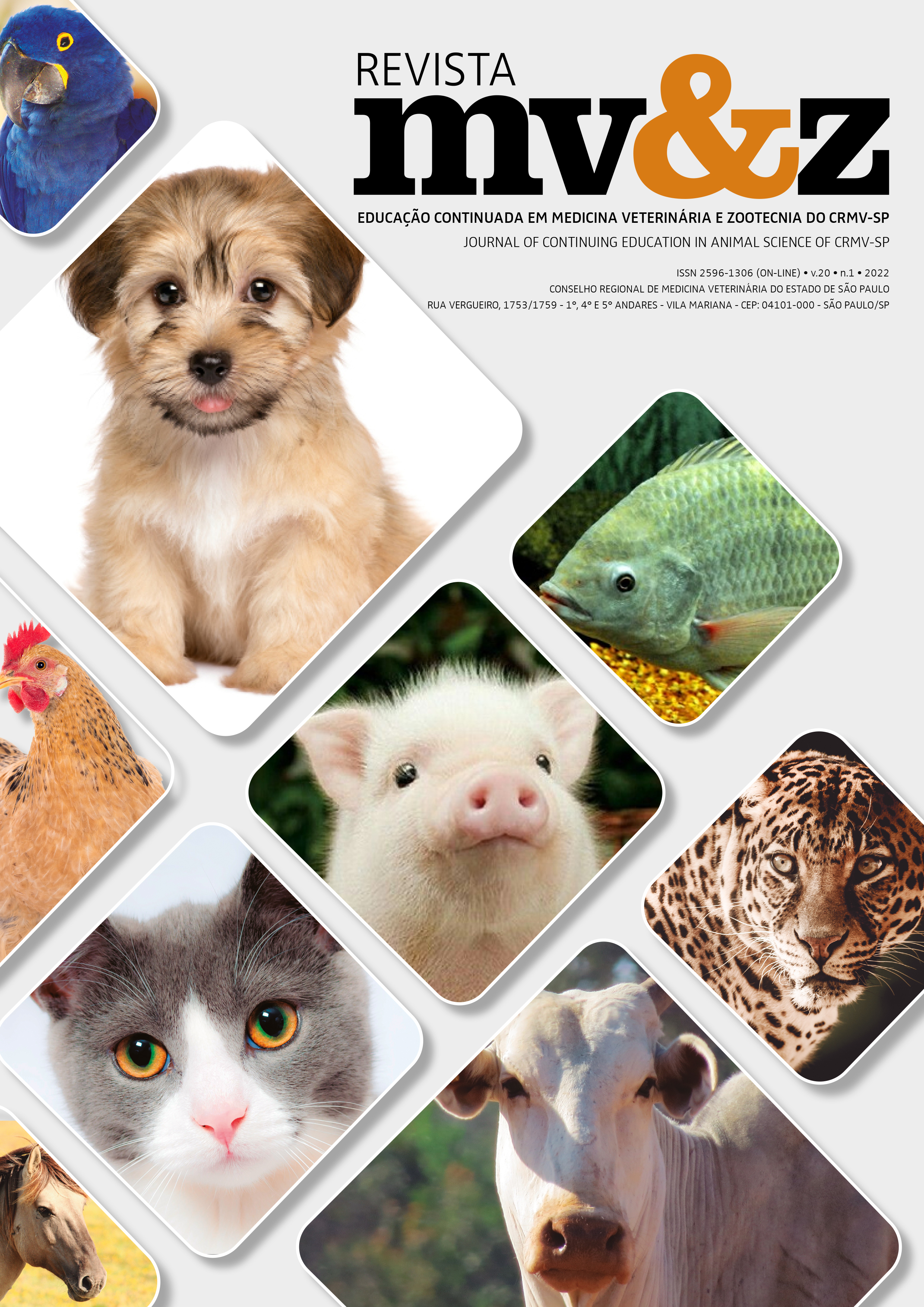Implicação da glomerulonefrite na fisiologia renal de cães e gatos: uma revisão de literatura
Conteúdo do artigo principal
Resumo
Nos túbulos renais ocorre um processo de seleção do filtrado glomerular, que é formado por água, eletrólitos, glicose, ureia e uma pequena quantidade de proteína. Principalmente água, sódio e glicose serão reabsorvidos, e demais componentes do filtrado seguirão para o processo de excreção. Hemácias, leucócitos e proteínas são maiores que os poros das membranas glomerulares íntegras, e, por isso, uma urina normal quase não apresenta proteínas em seu conteúdo. Um glomérulo que permite a passagem de proteínas não está desempenhando corretamente a sua função e esses danos à barreira glomerular de filtração podem resultar em doenças renais com diversas manifestações clínicas que serão abordadas neste artigo. O objetivo deste trabalho é fazer uma revisão de literatura sobre glomerulonefrites e suas implicações em cães e gatos para uso na prática da clínica de animais de pequeno porte.
Detalhes do artigo
Seção
1. Autores mantém os direitos autorais e concedem à revista o direito de primeira publicação, com o trabalho licenciado sob a Creative Commons Atribuição-NãoComercial-SemDerivações 4.0 Internacional
2. Autores têm autorização para assumir contratos adicionais separadamente, para distribuição não-exclusica da versão do trabalho publicada nesta revista (ex.: publicar em repositório institucional ou como capítulo de livro), com reconhecimento de autoria e publicação inicial nesta revista.
3. Autores têm permissão e são estimulados a publicar e distribuir seu trabalho online (ex.: em repositórios instituicionais ou na sua página pessoal) a qualquer ponto antes ou durante o processo editorial, já que isso pode gerar alterações produtivas, bem como aumentar o impacto e a citação do trabalho publicado (Veja O Efeito do Acesso Livre);
